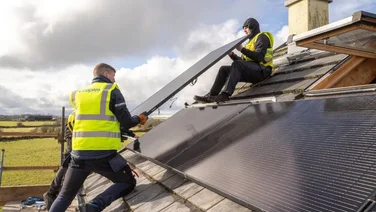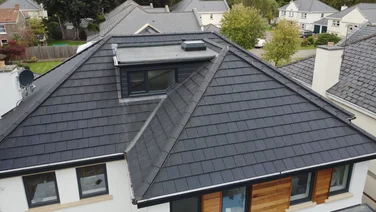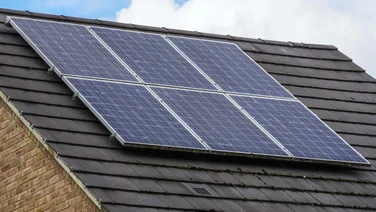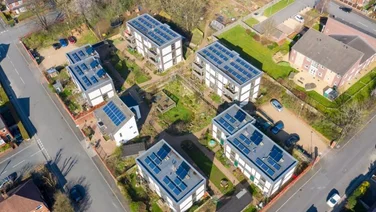- Renewable energy is also becoming more accessible across Europe
- Solar panels are constructed almost entirely from aluminium, glass and silicon, which are all very easy to break down
- Give your defunct solar panels to your solar panel installer
- Domestic solar panel recycling is completely free
The popularity of solar panels of all types is skyrocketing, especially as costs continue to decline.
Renewable energy is also becoming more accessible across Europe, as prices continue to fall across Germany, Spain and France, with prices slipping by almost nine-tenths in some cases.
With people across the world increasingly aware of the benefits of solar energy, this increase is unlikely to slow down anytime soon.
According to a 2022 report by the IEA, the energy crisis sparked by the Russia-Ukraine war steered European countries to up their renewable capacity by 40%, which will be achieved by the end of 2024. Globally, approximately 100 million households will rely on rooftop solar PV by 2030.
However, this worldwide splurge on solar panels has created a problem further down the line: ‘end-of-life management’. In the mid 2030s, a lot of solar panels are expected to conk out for good, and it may hit us like a tonne of silicon bricks.
So what can you do to avoid this? Recycle your panels, of course, which we’ll explore in more detail below.

Glass being extracted from a solar panel (Credit: PV Cycle)
Are solar panels recyclable?
Solar panels are absolutely recyclable.
They’re constructed almost entirely from aluminium, glass and silicon, which are all very easy to break down and use again. This means your green energy machines stay green after their job is done.
People know exactly how to smash panels up and reuse all their bits – it’s just a case of scaling up the industry in preparation for the defunct-solar-panel timebomb.
If we do it properly, by the late 2030s there’ll be a whole new generation of solar panels built from the remnants of the ones we use now.
How do you recycle your solar panels in the UK?
Give your defunct solar panels to your solar panel installer.
Under EU regulations (which still apply, even post-Brexit), your solar panel installer is legally obliged to take your defunct solar panels off you, or at least fund a Distributor Tale-back Scheme (DTS).
Every solar panel company (importer or manufacturer) in the UK must also be part of a Producer Compliance Scheme (PCS), such as the government-approach PV Cycle. This ensures that all solar panels are collected and recycled properly.
So, get on the phone to your solar panel installer – they’ll know what to do. It’s most likely they’ll take your panels to a Designated Collection Facility (check the DFC database to find one near you) before the panels go on to a recycling point.
If your installer has gone out of business, you can arrange for your solar panels to be taken to one of these centres – again, free of charge, through a service like PV Cycle.

Are solar panels actually recycled in the UK?
Solar panels are indeed recycled in the UK.
There’s only one recycling centre on these shores that operates on an industrial scale: Recycle Solar, located in Scunthorpe.
This factory recycles hundreds of solar panels per year, though this number is set to increase significantly in the next five-to-10 years, as more panels come to the end of their lifespan.
Recycle Solar doesn’t deal with all the defunct solar panels in the UK, as some are sent to a solar recycling point in south-eastern France that’s owned by utilities giant Veolia.
How much does solar panel recycling cost?
Domestic solar panel recycling is completely free, all you need to do is contact your installer and they’ll do the rest.
If you’re a business who wants to recycle your solar panels, there will likely be a charge.
The cost of this will depend on the amount of solar panels you have, the type and the logistics. Some companies, like Collect and Recycle, will be able to give you free quotes on solar panel recycling. However, check with your installer first.
There is yet to be any significant research into the wider economic cost of solar panel recycling. According to Gavin Heath of the National Renewable Energy Laboratory, recycling solar panels in the US costs around $10-20 per module.
What’s the typical lifetime of a solar panel?
The average lifespan of a solar panel is 25-30 years. While they can last longer, they might begin to degrade.
According to Freyr Energy, your solar panels won’t necessarily need to be replaced after 25 years, but their ability to capture sunlight will be diminished.
“Solar panels can generate electricity for another 10 or even 15 years after that,” the website says. “The types of solar panels and their efficiency are expected to decline over time, but if properly maintained, they will continue to generate decent amounts of electricity even after 30 years”.
There are lots of other minor causes, from optical failures to glass breakage. Generally, homeowners can look forward to having solar panels for decades, making the cost of solar panels worth it.
But what makes them so resilient?
They don’t have any moving parts, meaning there are no ‘weak spots’. They’re also largely easy to fix (in most cases), so don’t immediately throw them away if they have a wobble – contact your installer for help.
The solar panel recycling process
There are two different types of panel that dominate the solar power industry: silicon-based (92% market share) and thin-film (7% market share).
The recycling process is a little different depending on panel type, so we’ll go into both.
Silicon-based solar panel recycling
Material separation
The first thing that happens is material separation. Solar panels are composed of several different parts, so these need dividing up.
The panel’s aluminium frame and glass casing are disassembled and sent their separate ways. All (100%) of the aluminium and 95% of the glass is used again.
Thermal processing
The temperature is ramped up to 500 degrees, which evaporates the small plastic components and easily allows for the cell modules to be physically separated. Around 80% of the cell modules are reused.
Silicon moulding
Finally, you’re left with silicon wafers. These are etched away and smelted into reusable slabs. Eighty-five per cent of the silicon is repurposed for new solar panels, but 15% of it is lost in process.
Thin-film solar panel recycling
The panels are broken down
Thin-film solar panel recycling is a little more violent.
The panels are thrown into a shredder, followed by a hammermill. It’s important that each panel is reduced to 4mm or 5mm pieces, so the lamination keeping the materials together breaks.
The materials are separated
Unlike the process for silicon-based panels, here you’re left with a mixture of solid and liquid materials, so a huge rotating screw is used to separate them.
The semiconductor material (usually Cadmium telluride, CdTe or Copper indium gallium selenide, CIGS) is removed from the glass with acid and peroxide and then the glass is rinsed with water.
The parts are reused
Around 95% of the semiconductor material and 90% of the glass is reused. You’ll notice that thin-film solar panel recycling rescues more of the semiconductor material, but less of the glass.
There are issues surrounding the toxicity of cadmium and its threat to the environment, so silicon-based solar panels are generally considered the more eco-friendly option when it comes to recycling.
How do I dispose of solar panels in the UK?
Contact your solar panel installer, as they’re legally required to pick up your panels and send them to be recycled, free of charge.
If your installer doesn’t exist anymore, get in touch with a free service like PV Cycle, which will take your panels to a Designation Collection Facility – the first step on their recycling journey.
Benefits of solar panel recycling
Here are all the reasons why solar panel recycling is an excellent idea:
- The panels aren’t going to landfill. Burying waste in the ground is bad, and reusing old materials lowers the demand for new materials.
- Certain rare elements are rescued. The Earth’s supply of gallium and indium is actually steadily depleting, and we (currently) use them in solar panels. If we just bury the gallium and indium, we’ll eventually run out.
- There’s a lot of money involved. According to IRENA, the raw materials we could recover from solar panels by 2030 is worth about $450 million – which could fund around 60 million new solar panels.
- Employment opportunities. As we’ve already said, the world needs to set up a proper solar panel recycling industry, and pronto. Get this thing going, and there’ll be a lot of jobs created.
Which countries recycle solar panels the most?
European countries are quite ahead of the curve with solar panel recycling.
The EU’s Waste from Electrical Equipment Directive, which the UK is also signed up to. This means it’s effectively illegal to throw solar panels in landfills.
Every country who’s signed up to and follows the directory has a target of reusing or recycling 80% of large electronic equipment, which includes solar panels.
The US has more than 23 solar panel recycling facilities across the country, having made changes over the past to improve its 10% recycling rate.
China has also drawn up plans to create a solar panel recycling infrastructure by the end of the decade, which is positive as they are one of the biggest creators of solar technology.
Summary
- Under EU regulations (which still apply, even post-Brexit), your solar panel installer is legally obliged to take your defunct solar panels off you, or at least fund a Distributor Tale-back Scheme (DTS)
- There’s only one recycling centre in the UK that operates on an industrial scale: Recycle Solar, located in Scunthorpe
- If your installer doesn’t exist anymore, get in touch with a free service like PV Cycle, which will take your panels to a Designation Collection Facility
- European countries are quite ahead of the curve with solar panel recycling
- The EU’s Waste from Electrical Equipment Directive means it’s effectively illegal to throw solar panels in landfills






